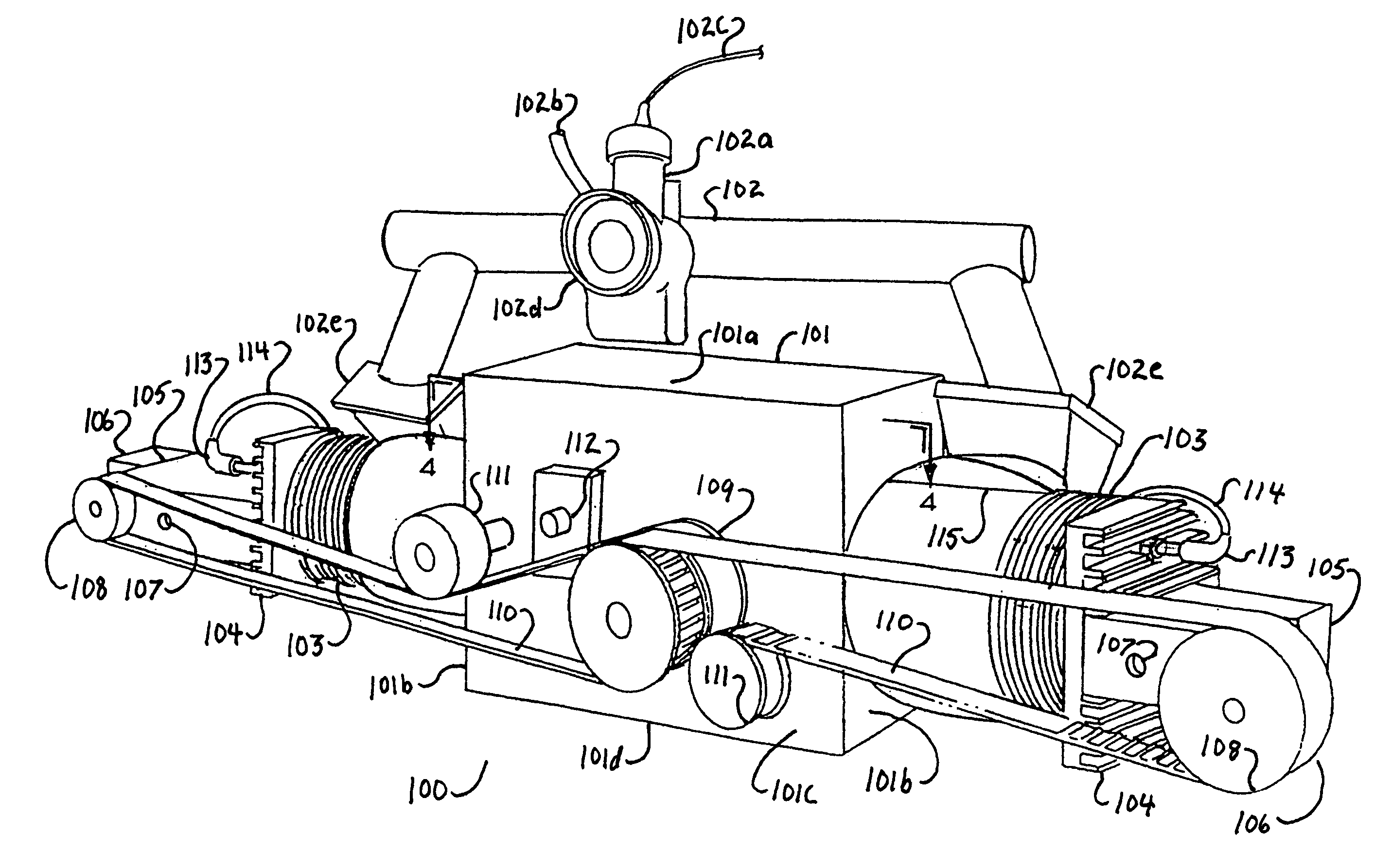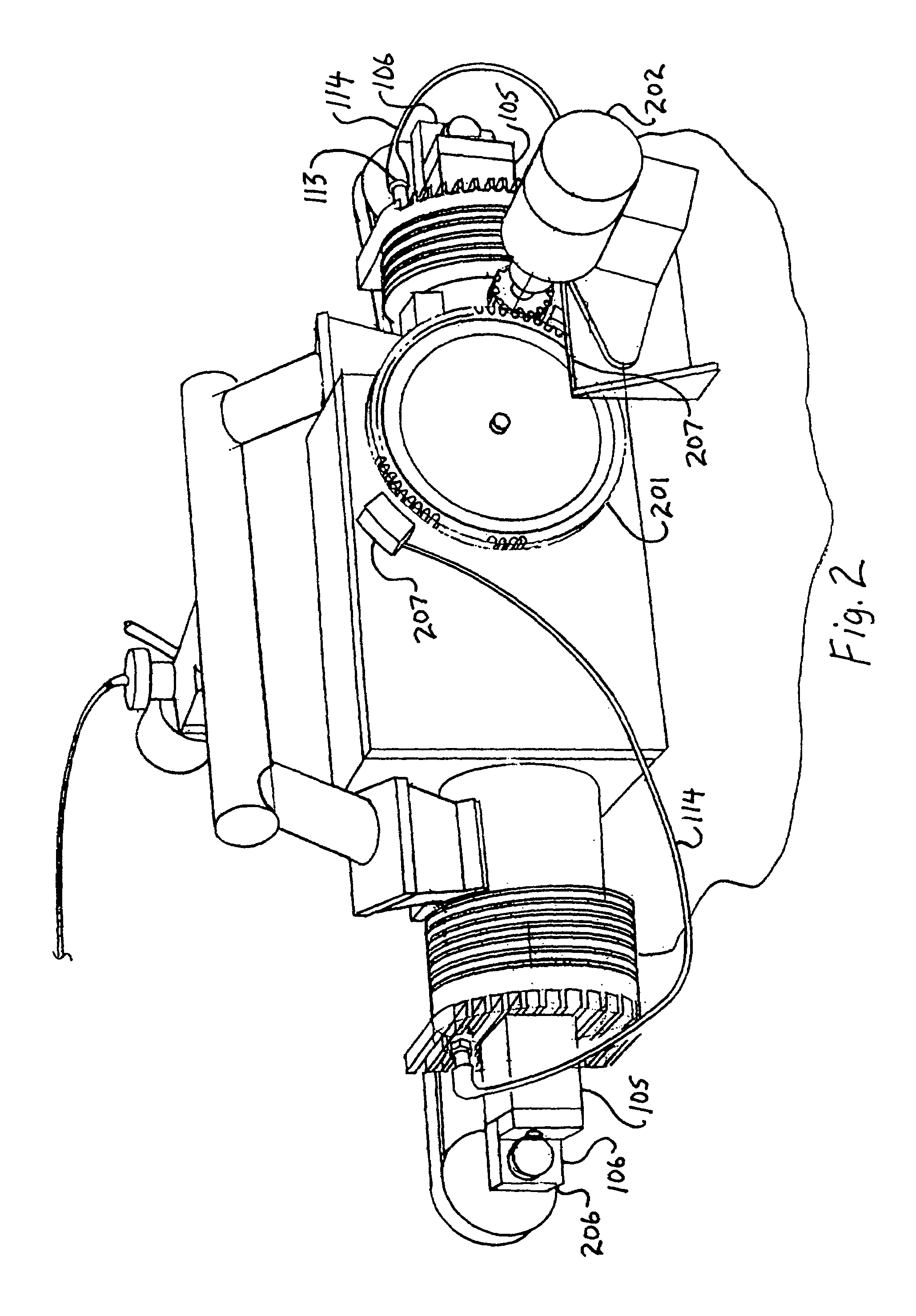Internal combustion engine machine incorporating significant improvements in power, efficiency and emissions control
a technology of internal combustion engine and significant improvement, applied in the direction of machines/engines, mechanical equipment, auxilaries, etc., can solve the problems of reducing the efficiency of both types of engines, and generating excessive fuel and lubricating oil costs, etc., to achieve the effect of improving power, efficiency and emissions control
- Summary
- Abstract
- Description
- Claims
- Application Information
AI Technical Summary
Benefits of technology
Problems solved by technology
Method used
Image
Examples
Embodiment Construction
[0241]The key novelties of this invention lie in its means of lubrication combined with its means of aspiration and exhaust. A number of alternative modes are offered and they can be “mixed and matched” as needs dictate. Note that in every mode described, fuel injection may be substituted for carburetion, providing increased performance, but at the expense of increased system complexity and monetary cost.
[0242]Referring to FIG. 1, the engine in the first preferred mode, a two-stroke cycle dynamic pressure powered lubrication configuration (100), has a combination oil sump / crankcase (101) with a top and top plate (101a) and combination end walls / cylinder compression walls (101b), side-walls (101c) and a bottom (101d). It includes an air / fuel intake manifold (102), a carburetor (102a), a fuel inlet (102b), a throttle cable (102c), a carburetor air intake (102d) and a one-way air intake reed valve (102e).
[0243]On either end of the combination oil sump / crankcase is a cylinder (103) with...
PUM
 Login to View More
Login to View More Abstract
Description
Claims
Application Information
 Login to View More
Login to View More - R&D
- Intellectual Property
- Life Sciences
- Materials
- Tech Scout
- Unparalleled Data Quality
- Higher Quality Content
- 60% Fewer Hallucinations
Browse by: Latest US Patents, China's latest patents, Technical Efficacy Thesaurus, Application Domain, Technology Topic, Popular Technical Reports.
© 2025 PatSnap. All rights reserved.Legal|Privacy policy|Modern Slavery Act Transparency Statement|Sitemap|About US| Contact US: help@patsnap.com



